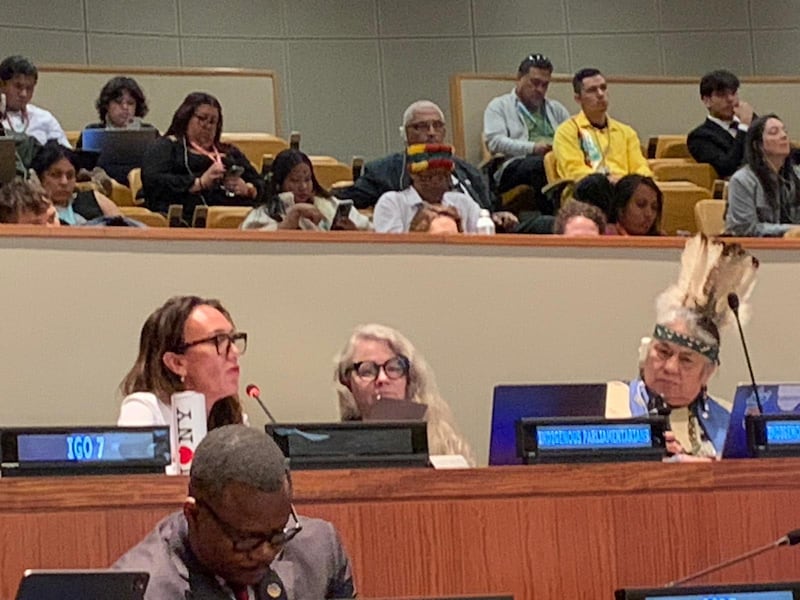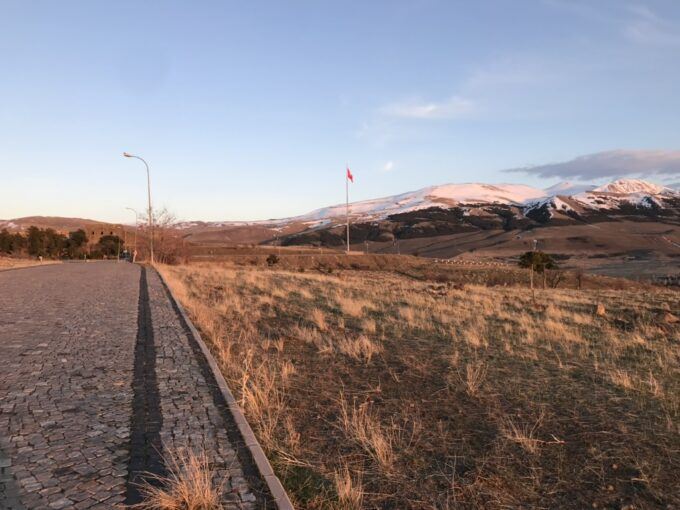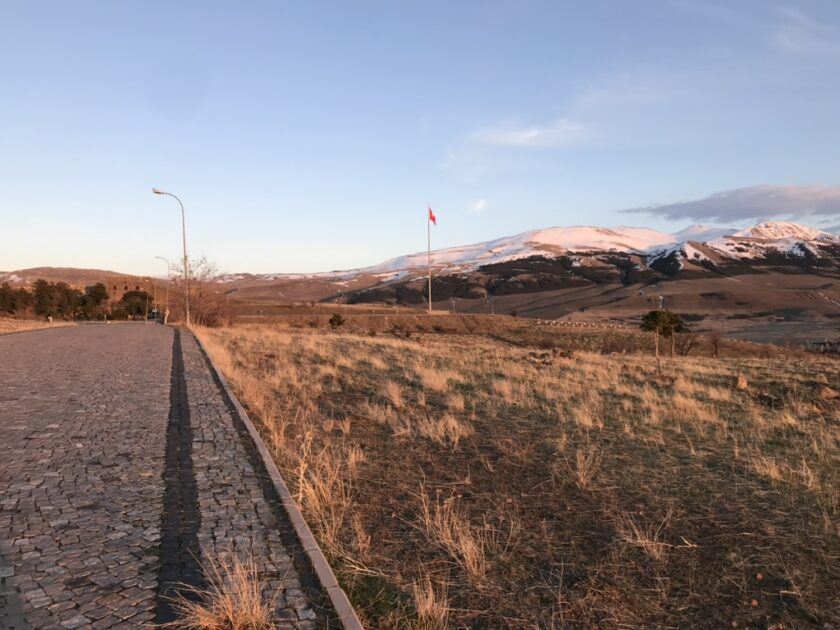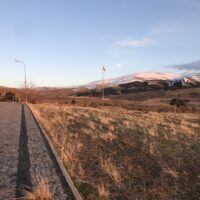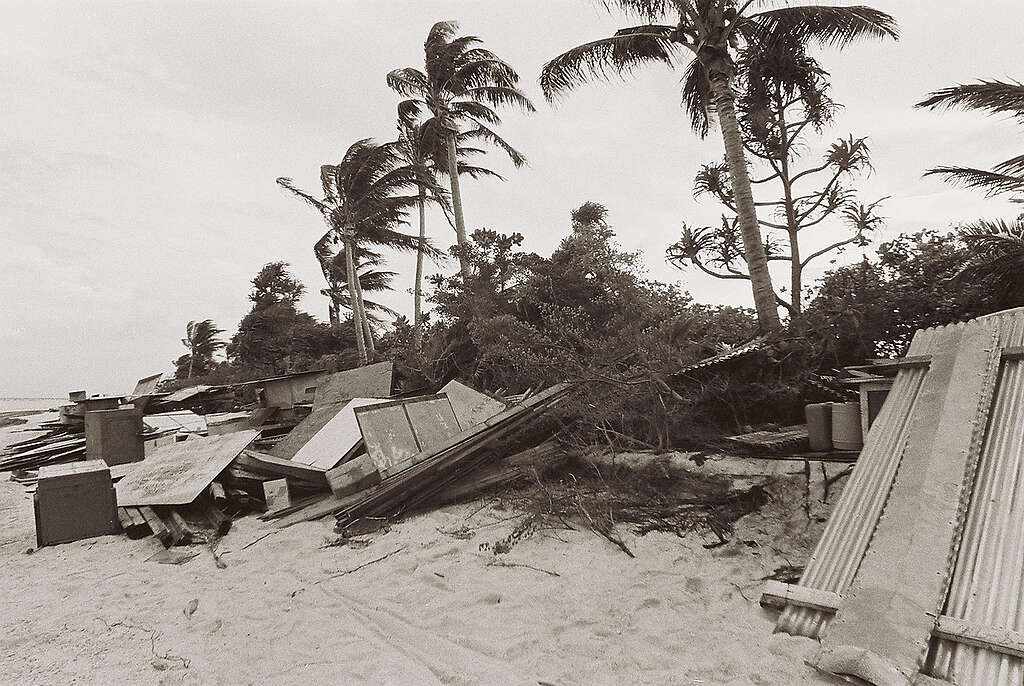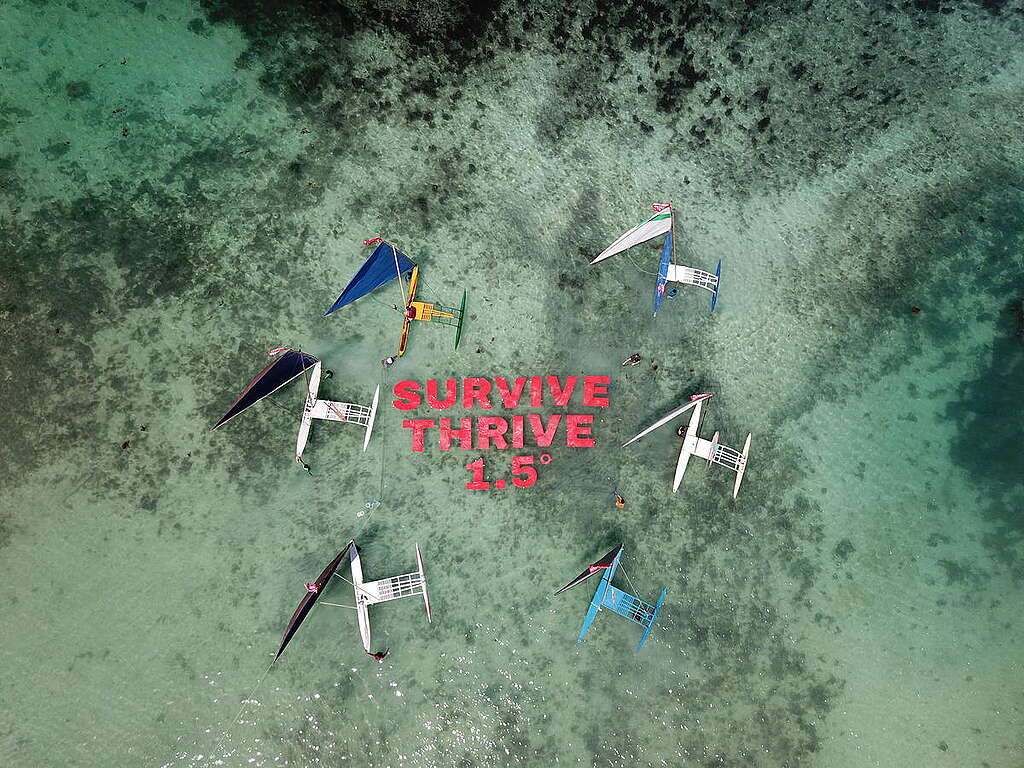Israel and the Palestinian Authority are each convinced that the long reach of history is on their side; the Israelis believe that future generations throughout the world will be detached from the illegal and oppressive acts committed against the Palestinians and only be aware of their present situations; the Palestinians believe that a Jewish Israel has no place in an Arab world, will constantly face enemies and hostility from Arab and Muslim nations, and these nations will one day achieve sufficient power to force their dictates on the Zionist regime.
With its historical view, Israel proceeds to ignore Palestinian and international pleas to halt its oppression and continues with plans to fulfill the mission proposed by the Zionist Organization at the 1919 Paris Peace Conference — gain control of the land, obtain the aquifers, and create a greater Israel from the Mediterranean Sea to the Jordan River, and maybe further.
The Palestinian Authority proceeds with continuous compromises, with hope that an Israeli government will recognize the Authority’s efforts to achieve an arrangement that satisfies Israel’s wants and preserves the Palestinian community within the former British Mandate. The stoic nature of the Palestinian people, after decades of violent aggression against them, is remarkable. Observing the Palestinians enduring the daily criminal, scheming, vicious, brutal, and violent attacks and still maintaining their presence is a tribute to human resourcefulness, a remarkable achievement that deserves praise from the entire world.
Stoicism and commendable behavior do not move oppressive regimes that have the tools and forces to control the agenda. Israel remains recalcitrant. Nothing left for the Palestinians but to prove that Israel’s recalcitrance will work against its goals; with several millions of Palestinians within its borders, Israel will be a de facto binational state. Why not make it official and in accord with an agreeable plan?
With that in mind, Jonathan Kuttab, co-founder of Nonviolence International, offers a thoughtful, provocative, and commendable proposal, outlined in a book, Beyond The Two-State Solution. A brief summary of Jonathan Kuttab’s propositions:
Essential Elements of the New Order
1. Right of Return
The availability of this right is a serious requirement for Zionists, which Palestinians must accept. On the other hand, Palestinians, who have been forcibly denied access to their homeland, also must have a recognized right of return.
2. Equality and Non-discrimination
Public institutions, lands, funds, and resources must be utilized in the interest of all citizens, and discrimination must not be tolerated. Arabic, which is currently formally recognized as an official language in Israel, will need to be deliberately incorporated into public life, on a par with Hebrew.
3. Freedom of Movement
Restrictions of travel between the West Bank, Gaza, the settlements, Jerusalem and pre ’67 Israel must be removed, as well as the Wall and the checkpoints
4. Relations with the Arab world
Palestinians need to reevaluate their pan-Arab identity, and adjust it to reflect the reality that their state now is both Jewish and Arab to its very core.
5. Defense
The new State may require that the Minister of Defense, as well as a majority of the top brass in the army be Jewish as a matter of permanent constitutional law. Palestinians, however, must be free to join the army on the basis of equality, while all citizens who wish, must be free to demand exemption from military service for reasons of conscience.
6. Legal Protections
In addition to a constitution that embodies strict guarantees that safeguard the interest of either group, the “Protection Clauses” must be safeguarded from alteration by requiring that they can only be altered by high majorities “Protection Clauses” will remove the ‘demographic threat’ and ensure that a group which has numerical majority will not be able to oppress a numerical minority, or that a future change in the numerical balance between the two communities will not make the minority vulnerable to oppression by the majority.
7. Ministry of Cooperation and Coexistence.
This ministry will promote understanding of the history, culture, and language of each community by the other. It will also promote joint activities and programs intended to heal the hurts of the past and build understanding and tolerance between the two communities.
8. Civil Law
New civil laws must be promulgated that will ensure the rights of secular individuals, mixed couples, and religious communities that are not currently recognized. These include Reform and Conservative Jews, as well as Evangelicals. Without derogation from the existing rights of religious courts, individuals who choose not to be so governed should be allowed to follow their conscience and not be forced to submit to religious courts of their particular religious community.
9. Name, Character, Public Holidays, Symbols and Flags
Careful thought and creativity with input from both sides are required to have these elements of national identity reflect the desires of both communities without exclusivity or discrimination against the others.
Aware that the One-state is a contentious issue and no plan will satisfy a majority of contenders, Jonathan Kuttab solicited comments to his book’s proposals. Here they are:
Only an Israel government that believes in political, economic and social equality for all persons, regardless of religion or ethnicity, that is guided by principles of peaceful coexistence, human rights, inclusion, and social awareness can implement Jonathan Kuttab’s design. That Israel does not exist, has never existed, and is unlikely to come into existence in the future.
Jonathan Kuttab has been idealistic and careless in expecting that this Israel will give attention to his well-formulated plan. Idealism is excusable. He has been careless by agreeing with nonsensical, spurious, and ahistorical statements consistently made by Israel’s promoters as a deceptive and supportive mechanism for the Zionist incursion. Jonathan Kuttab may not believe these deceptive narratives and felt it wise to appease those who could react angrily and scuttle the entire plan if the narratives were contradicted. Big mistake. It is dangerous to agree to anything with Israel, when agreement is not warranted. Affirm a narrative and Zionist supporters cite the acceptance as a valid appraisal of their mission. It is important to highlight these disagreements in detail, and have my responses serve as thoughtful retorts to others who express similar beliefs. Jonathan Kuttab writes:
The whole purpose of creating the Zionist movement and the state of Israel was the perceived need to create a country that can act as a safe haven where any Jew, anywhere and at any time, can feel free to go and live there, as of right in a state of his/her own.
During Herzl’s time, Jews were being emancipated, becoming integrated citizens of western nations, acquiring educational benefits, and achieving economic success in many countries. The principal reason for Zionism was not as Jonathan Kuttab suggests – just the opposite – due to their rapid advancements, Zionists felt that Jews would lose their attachment to Judaism and the Jewish community would wither. Few Jews at that time expressed sympathy with Zionism and most viewed Zionism as convincing their native nations that Jews had divided loyalties .
No questions asked. Israel currently has such an ironclad law (Right of Return), which it considers to be a Basic Law of constitutional stature. It also has a publicly supported network of institutions supporting this right. This seems to be one irreducible requirement for Zionists and Israeli Jews.
Nations that have a Right of Return give that right to previous nationals and usually their children. The Israeli Right of Return permits Jews from any nation to immigrate freely to a state that has no borders and from which neither they nor ancestors had any previous citizenship. Arabs who were previous Israeli nationals in the last decades, and whose children can claim direct descendant from an Israeli, have no right of return.
Immigration quotas that favor entry from certain nations and restrict entry from other nations are considered discriminatory. Israel goes full length, not allowing anyone from any country to immigrate, except a Jewish person. Israel’s self-absorbed and patronizing attitude of being the official protector of world Jewry imposes problems for Jews in other nations and violates the sovereignty of their home countries.
Given the experience of the Holocaust as well as millennia of antisemitic behavior in Christian Europe, including periodic pogroms and the Inquisition, security is an overriding consideration.
This is an exaggeration used by the Israeli government to convince the world that its oppressive attitude has a defensive reason. The inquisition, which affected other non-Catholics more grievously than it affected Jews, occurred 600 years ago in a primitive Europe. Why relate those ancient happenings to today? Anti-Semitic Christianity and pogroms were also happenings of the past. These specially originated words could apply to hundreds of other minorities, many of who have been treated magnitudes more viciously. I never met or ever knew any Jewish person who felt insecure because of the Holocaust or other occurrences. Do African-Americans fear being returned to slavery? Do British Catholics fear the United Kingdom and American South will return to persecute Catholics again? Security is Israel’s excuse for rationalizing every oppressive and offensive action.
Even secular Jews who resent restrictions imposed by the ultra-Orthodox, nonetheless have expressed a desire to live in a country where Saturday is the official Shabbat, life comes to a standstill on Yom Kippur, and where religious holidays are recognized and respected. They want a place where their tribal identity is recognized and where they can experience and develop Jewish communal life. To them, Zionism means a Jewish state, and a Jewish state reflects in some fashion a Jewish calendar, Jewish culture and a Jewish rhythm to public life.
Jonathan Kuttab is talking about a small segment of the Jewish community. Half of world Jewry lives in nations that do not have an official Shabbat, and more than half of Israeli Jews do not need or want to have their weekend activities restricted.
In addition to culture, tribe, and rhythm of life, the Hebrew language is of vital importance. This has taken on much more importance than a hundred years ago when Hebrew was more of a liturgical language, and very few spoke it as a first language.
Linguists debate if Israeli Hebrew is a continuation of an ancient language or is a new language called Modern Hebrew that contains some Hebrew syntax. Because there was not extensive literature, poetry, philosophy, and history in a Hebrew language, the necessity for mass knowledge of the Hebrew language did not exist. English, which had become the international language, sufficed and was preferable. Creating a new language, Modern Hebrew, suits nationalist, chauvinist, and propaganda mechanisms.
Many Israelis have publicly expressed willingness, within the framework of a genuine peace along the lines of a two-state solution, to abandon some or all of the Jewish settlements in areas occupied in 1967. At the same time, the reality on the ground, with over 700,000 settlers living in those areas, as well as the historic and religious connection to such places as Hebron and Jerusalem indicate that no major displacement of settlers can take place. An unspoken requirement therefore is to permit Jews to have the same right to live in all parts of Eretz Yisrael as Palestinian Arabs.
Although Jews lived in the Levant and controlled a portion of the area during the short reigns of the Hasmonean kings, ancient Hebrew contributions to civilization and verifiable history are sparse and biblically contrived. For contemporary Jews, a proven relation to an Eretz Israel is “zero.” Some remains of Jewish dwellings, burial grounds and ritual baths can be found, but few, if any, major Jewish monuments, buildings or institutions from the Biblical era exist within the “Old City” of today’s Jerusalem. The oft-cited Western Wall is the supporting wall for Herod’s platform and is not directly related to the Second Temple. No remains of that Temple have been located. Archaeologist William G Dever, in his book, What Did the Biblical Writers Know, and when Did They Know It?: What Archaeology Can Tell Us about the Reality of Ancient Israel, writes, “By the beginning of the 21st century, archaeologists had given up hope of recovering any context that would make Abraham, Isaac or Jacob credible historical figures.” Jewish connection to Hebron remains a mythical story.
The Zionist movement and the State of Israel was formulated as a response to worldwide antisemitism. It was promoted as a refuge and potential champion and rescuer for Jews worldwide. It also fully depended on support of all forms from this diaspora. Jews insist that they are full and loyal citizens of whatever country they reside in, and correctly reject as antisemitic charges of dual loyalty.
Despite extensive recitations , no evidence exists of world wide anti-Semitism in the late 19th century, during the era of incipient Zionism. A few isolated groups in France and Germany accused Jews of attempting to dominate the economy and culture. Some attacks, organized to halt Jewish emancipation and combat Jewish competition, occurred early in the century in Germany (Hep-Hep riots) and others, related to exaggeration of acts by Jews and the assassination of Czar Alexander II in 1881, happened later in Russia. The YIVO Encyclopedia of Jews in Eastern Europe, an English-language reference work on the history and culture of Eastern Europe Jewry, prepared by the YIVO Institute for Jewish Research and published by Yale University Press in 2008, is an objective and authoritative source. Excerpts from their work, which can be found at https://yivoencyclopedia.org/article.aspx/Pogroms, show that “anti-Jewish violence in the Russian Empire before 1881 was a rare event, confined largely to the rapidly expanding Black Sea entrepot of Odessa,” and were “linked to the outbreak of the Greek War for Independence, during which the Jews were accused of sympathizing with the Ottoman authorities.” A later 1871 attack on the Jewish community was due “in part by a rumor that Jews had vandalized the Greek community’s church.”
The pogroms of 1881 and 1882, which occurred in waves throughout the southwestern provinces of the Russian Empire, were the first to assume the nature of a mass movement. Violence was largely directed against the property of Jews rather than their persons The total number of fatalities is disputed but may have been as few as 50, half of them pogromshchiki who were killed when troops opened fire on rioting mobs.
In all of Europe, from what I have been able to confirm, less than 100 Jews were killed and possibly a few thousand were injured in anti-Jewish riots during the 100 years of the 19th century that witnessed the establishment of political Zionism. For context, compare those figures to other atrocities during that time, all of which are rarely mentioned.
California, United States: During 1846-1873, 9,492 – 120,000 perished or deported.
Amerindian population in California declined by 80% during the period.
Queensland, Australia: During 1840-1897, 10,000-65,180 perished.
3.3% to over 50% of the aboriginal population was killed.
Circassia, Caucasus: During 1864-1867, 400,000-1,500,000 perished or deported.
90% to 97% of total Circassian population perished or deported by Russian forces.
Ottoman Empire: During 1894 –1896, 100,000 killed.
Massacre of Armenians in Ottoman Empire.
Statistics on casualties to Israeli Jews in the Zionist/Palestinian conflict from 1920 to 2022, compared to casualties to 19th European Jews at the time of the Zionist movement, demonstrate that the gathering of the Jews has not made them more secure or safe in Israel.
From the start of the British mandate in 1919 until the year 2022, 74 years after the founding of Israel, 24,060 Jews have been killed and 36,260 have been wounded in the Levant. Due to identification of the Jews with Israel, attacks on Jews in the western world are increasing. Sheltered by high walls and a strong military, Israeli Jews have been able to defend themselves against embittered enemies.
Safety from persecution.
Extensive reports demonstrate prejudices by Israeli authorities and citizens against the Middle East and North African Jews, Yemenite Jews, and Ethiopian Jews.
In the year 2013, 60 years after the Middle East and North African Jews came to Israel, government studies conducted in conjunction with The Hebrew University of Jerusalem found that “a job applicant with an Ashkenazi-sounding name has a 34 percent higher chance of being hired by an employer than a person with a Sephardi-sounding name applying for the same position, [and also that] over 22% of employers openly stated that they actively discriminate against applicants with Arab-sounding names.”
The Middle East and North African Jews who came to Israel were Arabs; the Ashkenazi were European; the Beta Israel were Ethiopians; and the Yemenites were from the Arabian Peninsula. Israel replaced the differing languages, dialects, music, cultures, and heritage of these ethnicities with unique and uniform characteristics, and created a new people, the Israeli Jews. Destruction of centuries old Jewish history and life in Tunisia, Iraq, Libya, and Egypt. accompanied the creation of a new people. The Zionists, who complained about persecution of Jews, wiped out Jewish history, determined who was Jewish, and required all Jews to shed much of their ancestral characteristics before they could integrate into the Israel community.
A variety of Jewish groups, considered religious terrorist organizations in Israel, have committed disturbing and violent acts against Jews, more in Israel than the rest of the world combined, including the murder of Prime Minister, Yitzhak Rabin,
Brit HaKanaim was a radical religious Jewish underground organization, which operated in Israel between 1950 and 1953.The movement’s ultimate goal – establish a state run by Jewish religious law.
The Kingdom of Israel group was active in Israel in the 1950s. Members of the group were caught trying to bomb the Israeli Ministry of Education in May 1953, because they saw the secularization of Jewish North African immigrants as a direct assault on the religious Jews way of life and a threat to the ultra-Orthodox community.
Keshet (1981-1989), an anti-Zionist Haredi group, focused on bombing property without loss of life.
Sicarii, an Israeli terrorist group founded in 1989, plotted arson and graffiti attacks on leftist Jewish politicians who proposed rapprochement with the Palestine Liberation Organization.
Lehava, an extreme religious minority, used terror to implement their views of how the society should look. Former Justice Minister Tzipi Livni stated, “This organization works from hatred, racism, and nationalism, and its goal is to bring an escalation of violence within us.”
Sikrikim, an anti-Zionist group of ultra-Orthodox Jews, committed acts of violence against Orthodox Jewish institutions and individuals who would not comply with their demands.
The Revolt terror group claimed the secular State of Israel has no right to existence; they hope to create a Jewish Kingdom in Israel. Arabs will be killed if they refuse to leave.
Today, Israel has its orthodox settlers daily committing crimes against the Palestinian population, continuous pogroms that the Israeli government and media treat as happenings that are part of daily life.
Conclusion
One-state for all is a correct concept, but not a strategy. Until there is an effective strategy, the proposition is dubious. Transferring the dubious two-states to a dubious one-state occupies time and energy in futility, of which the Israeli government heartily approves, especially because its own strategy is to have a “no-state” – an assemblage of people in a land without borders, without a constitution, without a fixed set of laws, and without a nationality that is described by the state. Easy to expand and incorporate Jews from other nations when the land of Israel is a “no-state.”
Having one-state returns the area to the British Mandate and to what would have been the eventual outcome of the Partition Plan. To achieve that arrangement, either the Israeli legal and administrative systems will have to be changed, or the characteristics that defined the Zionist mission will have to be deposed. The one-state is a proper goal; overcoming the reality of the Zionist vision of a “no-state” is the principal priority.
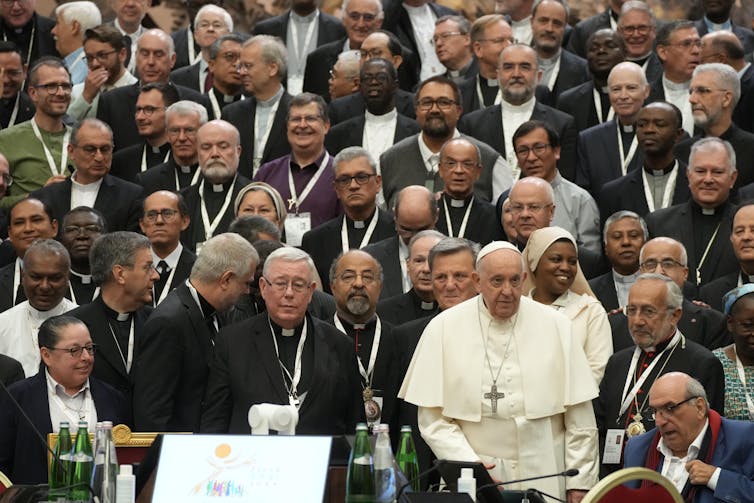
![]()





